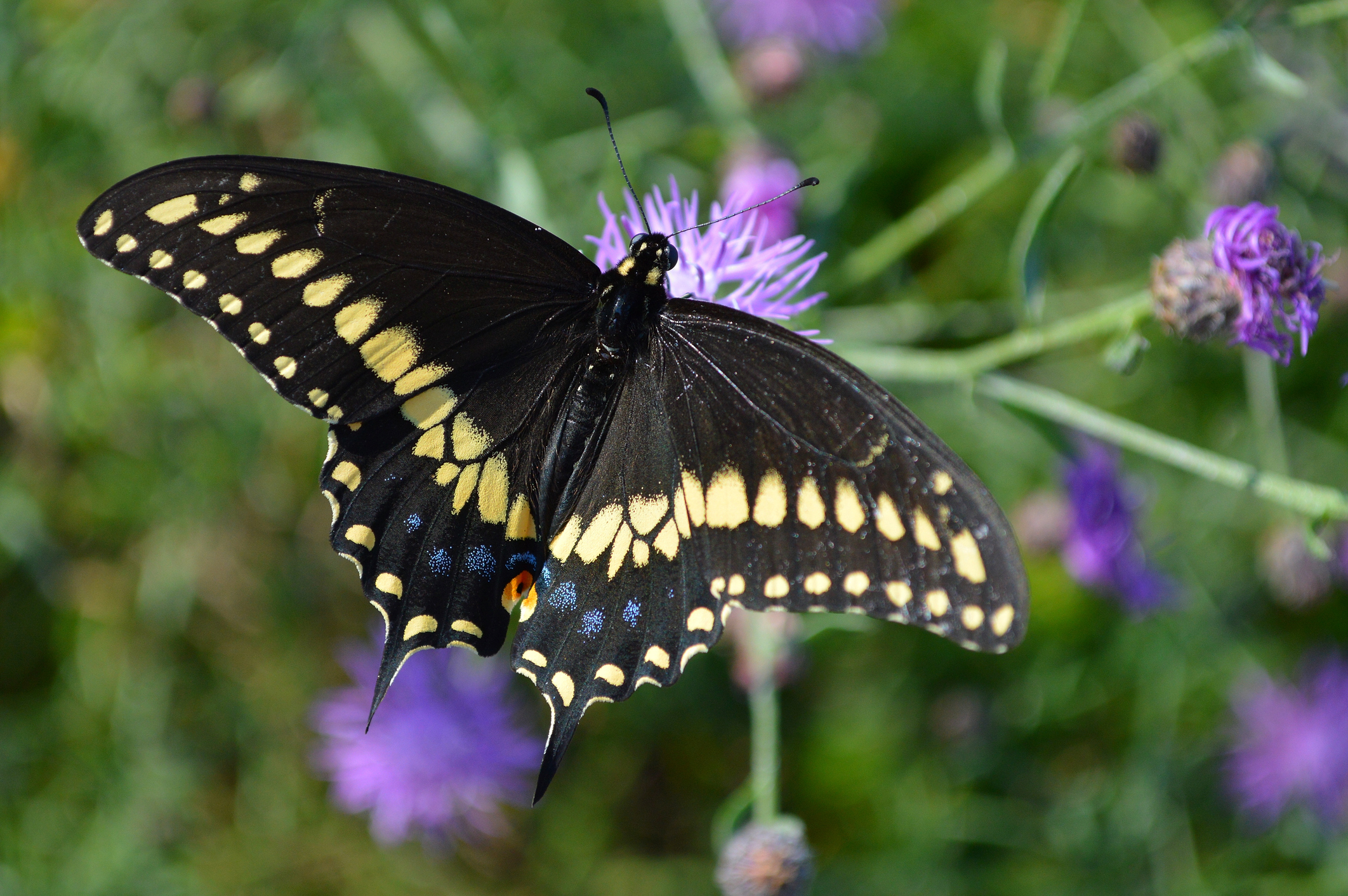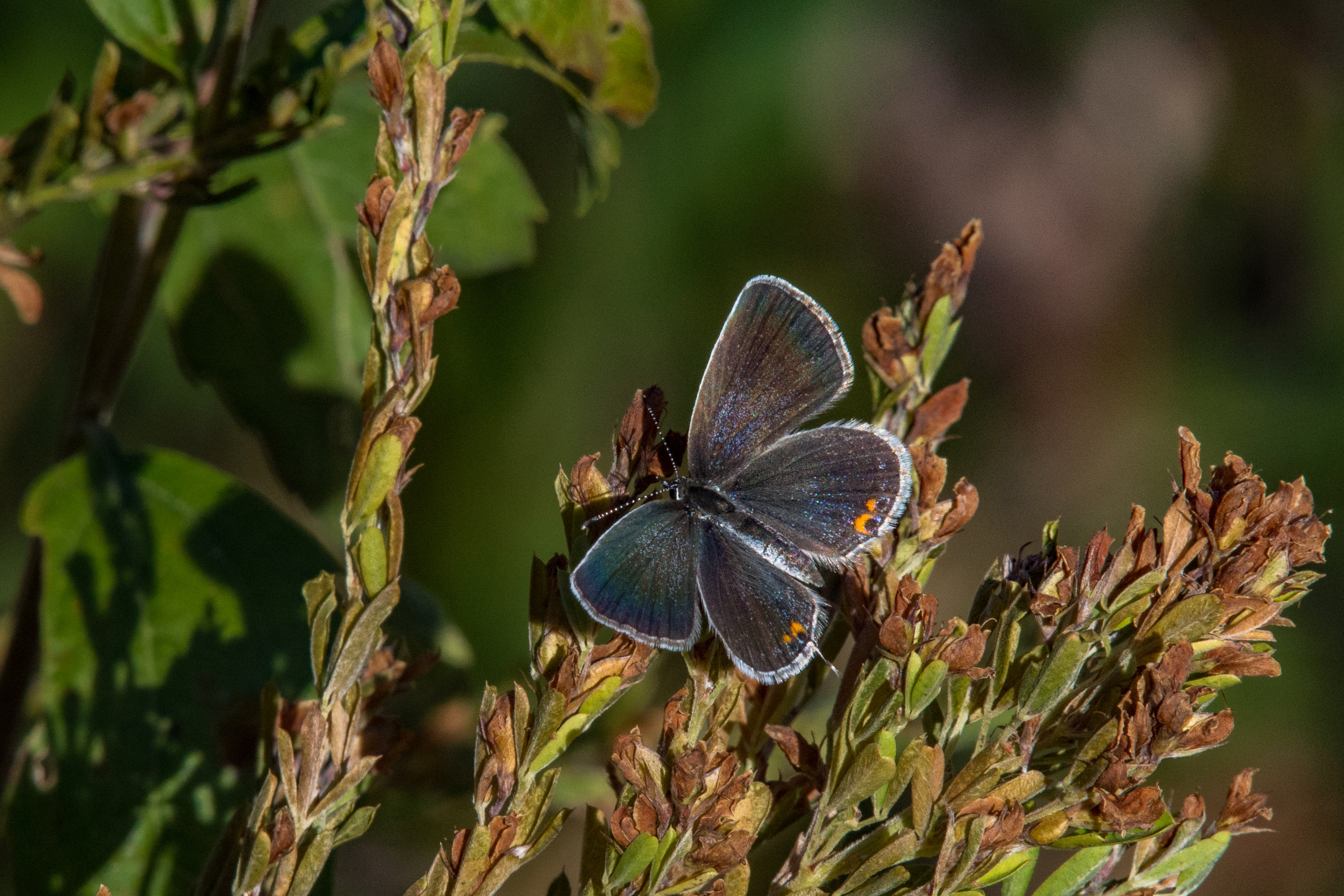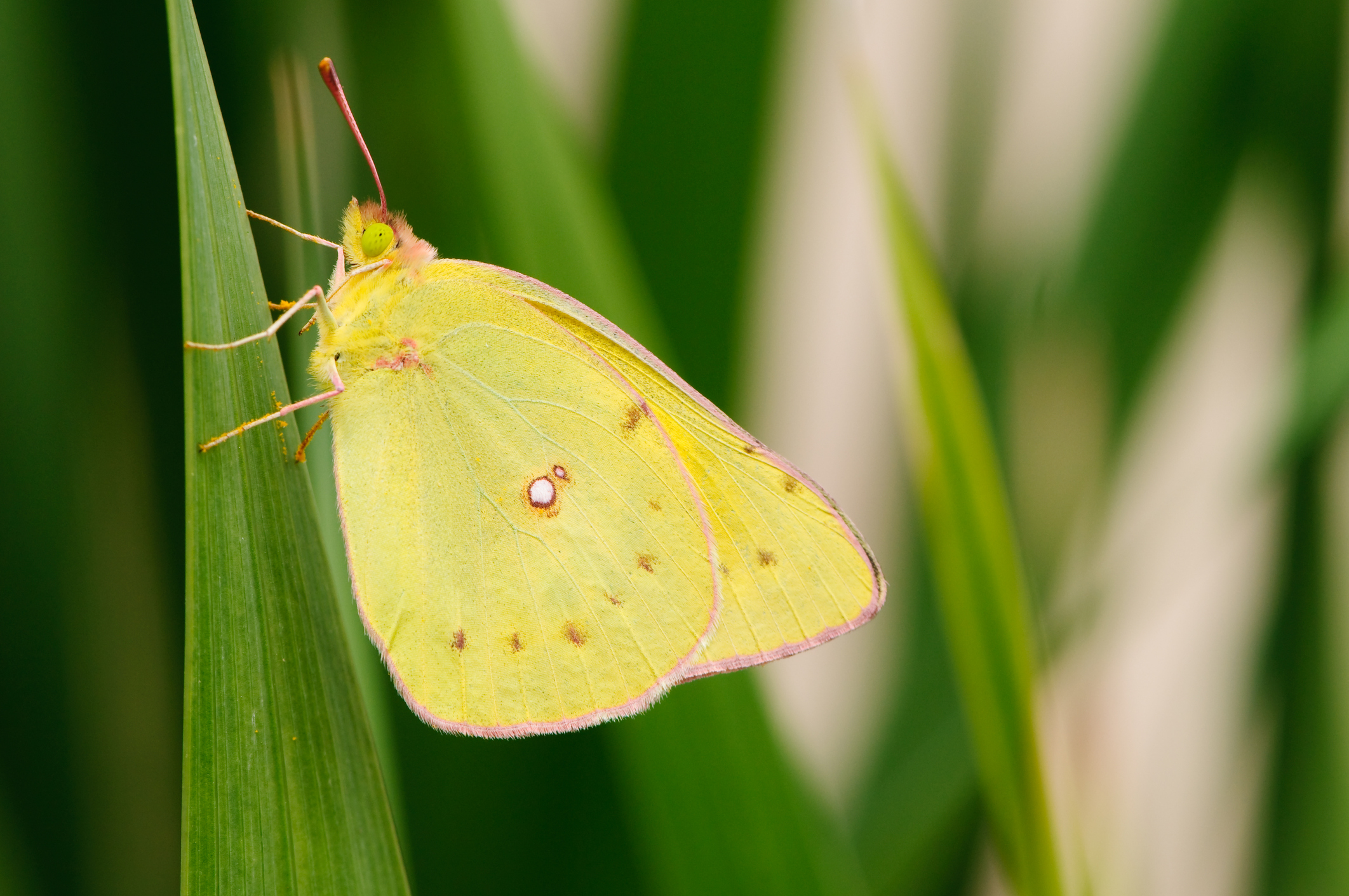
4 minute read
Kids, Have You Seen These Butterflies?
Andi Sedlacek
Andi Sedlacek is a publications supervisor in the DNR's Office of Communications.
Summer is aflutter with butterflies. While enjoying the sun this season, watch for these native butterflies in your backyard or at the park. Better yet, be a community scientist and help us track these important creatures by sharing your sightings at inaturalist.org or wisconsinbutterflies.org/butterfly.
SWALLOWTAILS
We have a few different kinds of swallowtails here in Wisconsin.
Black swallowtails are found throughout the state in sunny backyards and other open areas such as fields and parks. They enjoy nectar from flowers like purple coneflower, milkweed and native thistles.
Eastern tiger swallowtails are common throughout the southern part of Wisconsin. You can usually find them near wooded areas. As you go north in Wisconsin, you'll instead see its close relative, the Canadian tiger swallowtail. Eastern tiger swallow tails like many kinds of flowers, such as butterfly weed, Joe-Pye weed, milkweed and ironweed.
Giant swallowtails are not as common, but they are very recognizable. They can have a wingspan of up to 5 inches! You'll be more likely to spot one in southern Wisconsin. They're usually found near the woods. Their nectar of choice comes from wild bergamot, blazing star, goldenrod and swamp milkweed.



MEADOW FRITILLARY
These butterflies are dressed for Halloween with orange and black patterned wings spanning 1½ to 2 inches. Look for them in wet, marshy areas and meadows throughout Wisconsin. They enjoy the nectar of native plants like black-eyed Susans.
PAINTED LADY
Painted lady butterflies migrate to Wisconsin and are found statewide, but the numbers we see here change every year. Some years, they are common. In other years, you'd be lucky to see one!
Their black/brown and orange wings are spotted with white. Their wings are 2 to 3 inches across, making them medium-sized for a butterfly. They love gardens and open spaces. They also love nectar from flowers like native thistles, aster and blazing star.

AMERICAN COPPER
These cute little butterflies have a wingspan of just 1 inch and are easy to find. Look for vibrant orange and black on the top of their wings and a soft gray color with an orange and black pattern on the bottom.
You can find American coppers statewide, though only a little in the far northern part of the state. You're likely to see them in open areas like lawns and fields. They like to sip on the nectar of common buttercup, white clover, butterfly weed and yarrow.

EASTERN TAILED-BLUE
Not many things in nature are blue, but some butterflies are! The eastern tailed-blue is one of them, and it's common around the state.
Males have blue wings, and females have black wings. Both are pretty small, with a wingspan of 7/8 to 1/8 inches. Both males and females have a short tail on each wing complemented by orange dots. Watch for eastern tailed-blue beauties in open, sunny places such as parks and prairies. They like to dine on the nectar of flowers close to the ground, like clover.

CLOUDED SULPHUR
Clouded sulphur butterflies are very common in Wisconsin. They are unique because they don't hibernate over the winter. Their wings are a delicate light yellow with a thin black border and a few spots. Their wingspan ranges from 1½ to 2¾ inches. They're most abundant in hay fields with lots of alfalfa and clover.

PERFECT PAIRING
Flowers and butterflies go hand-in-hand. Butterflies love all types of flowers. They will visit nonnative flowers like lilacs, zinnias, cosmos and even dandelions. They generally prefer long tubular flowers, but they can also use some easy-to-reach, more open flowers.
WISCONSIN'S RARE BUTTERFLIES
Wisconsin has many rare and declining pollinators, including several state-protected and federally-protected species and other species of concern. What does that mean? Well, you’re lucky if you find one!
• Swamp metalmark
• Monarch
• Ottoe skipper
• Northern blue
• Karner blue
• Poweshiek skipperling
• Regal fritillary










